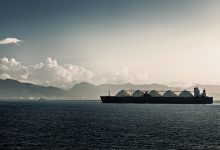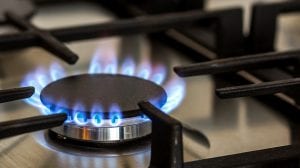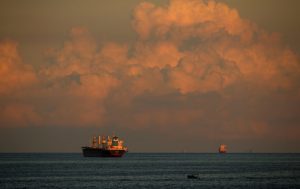Fortescue Future Industries, the green energy arm of Andrew Forrest’s Fortescue Metals, has signed a memorandum of understanding with Japanese engineering firm IHI Corporation to explore the potential to export green ammonia to Japan from Tasmania.
The ammonia would be produced at Fortescue’s planned 250 megawatt green hydrogen and ammonia project at Bell Bay on the north coast of Tasmania. Fortescue says the project, which is part-funded by the Tasmanian Government and would be powered by Tasmanian hydropower, could produce 250,000 tonnes of green ammonia per year.
The MoU commits to exploring “green ammonia supply chains between Australia and Japan”. Ammonia, a gas used in fertiliser, explosives, cleaning products and other industrial processes, is made from hydrogen and nitrogen.
Unlike pure hydrogen, it is relatively easy to liquify and transport, meaning there is the potential for it to be used as a means of storing and transporting green hydrogen – though this would be an energy intensive and expensive process.
Ammonia can also be used as a combustible fuel in itself, or converted back into hydrogen for use in hydrogen fuel cells.
Japan has shown significant interest in importing hydrogen, making it the most promising early market for the vast number of Australian green hydrogen projects that have been announced in recent months.
Japan’s interest is not just in green hydrogen. Kawasaki Heavy Industries, J-Power and Shell Japan and AGL Energy are in the process of exploring the potential to make “brown” or “blue” hydrogen out of Latrobe Valley brown coal and ship it to Japan.
In the “brown hydrogen” process, hydrogen is extracted from brown coal (lignite) and the CO2 that is produced as a byproduct is allowed to escape into the atmosphere. “Grey” and “black” hydrogen refer to use of natural gas or black coal instead of lignite. “Blue hydrogen” uses any fossil fuel as a feedstock, but theoretically captures and sequesters the CO2.
Green hydrogen is made in a completely different way, using renewably powered electrolysis to split water molecules into their component hydrogen and oxygen molecules.
In a low carbon world, Fortescue’s renewably-made hydrogen and ammonia would have a clear edge over hydrogen that uses fossil fuels as a feedstock. The company has plans to become a green hydrogen and ammonia colossus, with plans for up to 1,000 gigawatts of renewable capacity around the world, including 40 GW in the Pilbara in Western Australia. The idea is that much of that green electricity would run electrolysers that make hydrogen from desalinated seawater.
Fortescue Future Industries chief executive officer Julie Shuttleworth said Japan was a “priority market for green ammonia exports”.
“The world’s transition to a clean energy future represents a major growth opportunity and this MoU with IHI and IEA will help position FFI, IHI and IEA at the forefront of the global green industry,” she said.
“By leveraging our value chain and market access as well as the skills and capability of our people to rapidly develop complex projects, FFI is well placed to meet the future demand of green ammonia.”
IHI chief executive Hiroshi Ide said, “Australia, with an abundance of renewable energy, is a very promising location for large scale ammonia production. IHI will contribute to realising a carbon-free society by merging our ammonia combustion and production technology together with green ammonia.”
For more on ammonia exports, please listen to the latest episode of the Energy Insiders podcast, and the interview with Andrew Dickson from CWP, which is a partner is the 26GW Asia Renewable Energy Hub.









